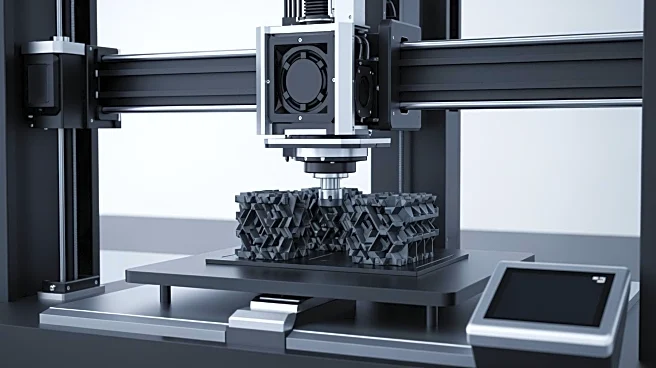What's Happening?
Hanwha Defense USA, a subsidiary of Hanwha Aerospace, has announced an investment in Firehawk Aerospace, a company based in Dallas, USA, that specializes in energetics and propulsion. This strategic investment aims
to advance the development of solid rocket motor technology by leveraging Firehawk's additive manufacturing capabilities and patented processes. The collaboration is expected to expedite the production of 3D printed propellants and the development of rocket motors, enhancing the delivery of missile systems with integrated capabilities. This move follows a recent investment from Presto Tech Horizons and a $4 million contract awarded to Firehawk by AFWERX under the Tactical Funding Increase initiative, which focuses on improving the range capabilities of solid fuel rocket motors.
Why It's Important?
The investment by Hanwha Defense USA in Firehawk Aerospace is significant for the U.S. defense industry as it addresses critical supply chain challenges and modernizes military capabilities. By advancing solid rocket motor technology, the partnership aims to enhance the U.S. military's strategic capabilities, potentially leading to more efficient and effective missile systems. This development is crucial for maintaining the U.S.'s competitive edge in defense technology, particularly in the context of global geopolitical tensions. The collaboration also highlights the growing importance of additive manufacturing in the defense sector, which can lead to cost reductions and increased production efficiency.
What's Next?
With the appointment of Michael Coulter as President and CEO of Hanwha Defense USA, the company is expected to strengthen its partnerships within the U.S. and support growth across shipbuilding and defense markets. Coulter's leadership will likely focus on expanding Hanwha's presence in the aerospace and defense sectors, both domestically and internationally. The continued collaboration with Firehawk Aerospace may lead to further innovations in propulsion technology, potentially influencing future defense contracts and partnerships. Stakeholders in the defense industry will be closely monitoring the outcomes of this investment and its impact on the U.S. military's operational capabilities.












